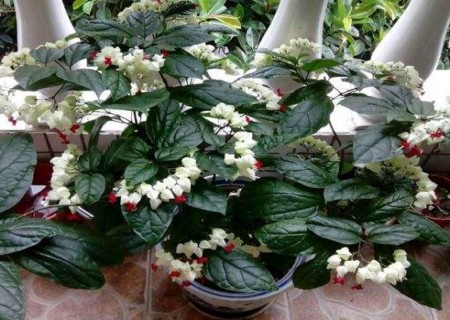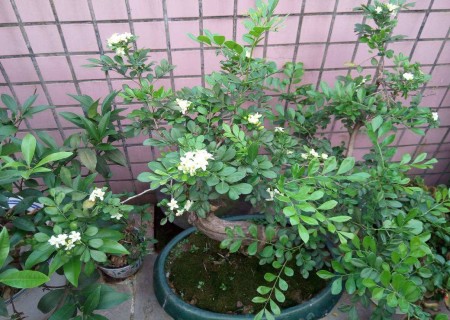Why does potted magnolia rot its roots? What about the rotten roots?
It is said that ink orchid watered with Rain Water is the best, take the hard work to pick up Rain Water to moisten the ink orchid, how to expect, or rotten roots, yellow leaves, do you also encounter such distress? Mulan rotten roots mostly occur in winter, mostly because of poor soil permeability, too much watering leads to rotten roots, many orchid friends do not know how to do rotten roots, do not know the harm of rotten roots.
The cold tolerance of Magnolia is poor, and potted plants in the north of the Yangtze River Basin often overwinter indoors. Due to low temperature in winter, soil hardening, excessive watering, fertilizer damage, etc., it is often easy to cause rotten roots, light ones affect its normal growth and budding and flowering, serious ones will lead to the death of the whole plant. So, why does potted magnolia rot? How to tell if there are rotten roots in potted magnolia? How to save the plants with rotten roots?
Why does potted magnolia rot? The rotten roots of Mulan are mainly caused by the following three aspects:
1. The soil permeability is poor.
The poor permeability of the soil is linked with watering. If the stickiness of the soil is heavy, the soil is easy to consolidate, and the water stays on the soil surface for a long time, and it is difficult for the root to absorb water.
2. Overwatering
The main reason for root rot is overwatering, the orchid plant did not absorb water in time, and the basin soil was moist and even stagnant for a long time. The soil has been impervious for a long time, and the roots do not get enough nutrients and rot.
3. Fungal infection
Rotten roots of Cymbidium are generally caused by fungi, nematodes and bacteria. Rotten roots are soil-borne diseases, which are mainly transmitted by soil moisture, underground insects and nematodes.
The simple and direct way to deal with it is:
1. Remove the rotten part
When the rotten roots of Meran are found, take the wolf out of the basin and cut off the moldy, blackened and hollow rhizomes according to the degree of rot of the roots, leaving the unrotten parts. At the same time, cut off the diseased leaves with spots and yellowing. As long as the bulb is completely rotten, it can survive.
2. Change the soil
Beat the old red brick the size of a pecan with bark at 1:1. If you only use earth, add crushed red bricks, put the big pieces below, and the small ones and the earth on top. However, in order to prevent the plant from being infected with germs, it is necessary to change a clean plain tile pot when replanting, or you can choose non-polluting plain sand planting.
3. Spraying chemicals
There must be some kind of bacteria in the rotten roots of the plant, so the medicine should be sprayed with fungicides in time, and carbendazim was used to irrigate the roots for 2 or 3 times.
4. Control water and fertilizer
In the subsequent maintenance, it is necessary to control water and fertilizer. Watering see dry and wet, the bottom of the basin will stop when there is water flowing out, and the basin will become dry and even whiten and water in time. For orchid plants that return to the pot, do not apply fertilizer until the growth is restored.
How to judge the rotten root of potted magnolia?
To distinguish the rotten roots of Cymbidium mainly depends on the color of leaves and potted soil. When the weather is warm in spring, the leaves of Cymbidium plant gradually lose their oil-green luster, and if the leaves are dry, hard and wrinkled, it can be preliminarily concluded that the roots of the plant have rotted. Secondly, when the weather is fine, the pot soil does not turn white and dry for a few days, which also indicates that the fleshy root of the plant has lost the function of absorption. Of course, in order to accurately judge the degree of root rot, the plant must be removed from the flowerpot before it can be finally determined.
What about the rotten roots of Meran? The way to save the rotten root of Mulan is:
1. Change the basin and trim to remove the rotten roots and empty sand to promote the roots. When it is preliminarily determined from the leaf surface and potted soil that the roots of potted Cymbidium plants are decaying, the orchid plants can be poured out from the pot, and the rotting position and damage degree of the roots can be seen directly. At this time, it is necessary to cut off the moldy, blackened and hollow roots in time, retain the unrotten parts, and remove some leaves with disease spots at the same time. As long as the water-like pseudobulb has not yet rotted, the plant can generally be resurrected.
2. in order to prevent the plant from infecting germs, a clean plain tile pot should be replaced when replanting, and non-polluting plain sand planting should be selected. When planting, just cover the base of the false bulb with plain sand, do not cover the false bulb, and finally cover the sand with a layer of clean soil or moss, and then put the replanted orchids in a cool, ventilated and moderately shaded place.
3. In the process of root restoration and regeneration of Cymbidium, it is generally not fertilized, and rainstorm irrigation must be prevented until the basal leaves turn green to regain luster, the leaves stand erect, and there are buds at the base of the bulbs before the normal water and fertilizer management can be restored. this process takes about 3 Mel 4 months.
Time: 2019-05-31 Click:
- Prev

What if the leaves of potted dragon spit beads turn yellow
Longtuzhu flower is native to tropical Africa, which can be divided into white calyx dragon bead and red calyx dragon bead. The flower is very beautiful, the color of the flower is in sharp contrast, and the flower shape is as peculiar as the dragon spitting pearl, which is the top grade of potted flowers. When the dragon spits beads in full bloom, the long core sticks out from the blooming red flowers, like the flexible tongue of a dragon. The leaf color is dark green
- Next

Will the potted plant of Jiuli incense bloom? What if it doesn't blossom?
Jiuli incense is evergreen all the year round, the tree shape is correct, the flowers are fragrant and lasting, and the color is white and beautiful. Pot planting is suitable for ground planting, and it is an ideal material for cultivating stump bonsai because of its fine leaves, exposed roots, thick stem, resistance to pruning, long life and so on. So, will your Jiuli incense pot plant blossom?
Related
- Fuxing push coffee new agricultural production and marketing class: lack of small-scale processing plants
- Jujube rice field leisure farm deep ploughing Yilan for five years to create a space for organic food and play
- Nongyu Farm-A trial of organic papaya for brave women with advanced technology
- Four points for attention in the prevention and control of diseases and insect pests of edible fungi
- How to add nutrient solution to Edible Fungi
- Is there any good way to control edible fungus mites?
- Open Inoculation Technology of Edible Fungi
- Is there any clever way to use fertilizer for edible fungus in winter?
- What agents are used to kill the pathogens of edible fungi in the mushroom shed?
- Rapid drying of Edible Fungi

